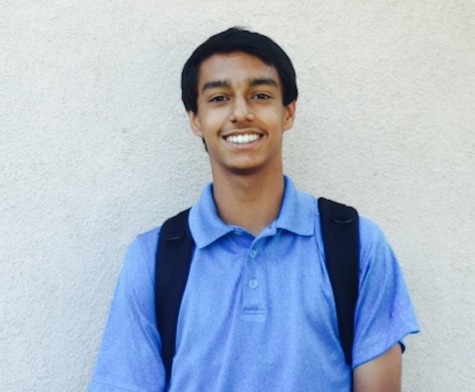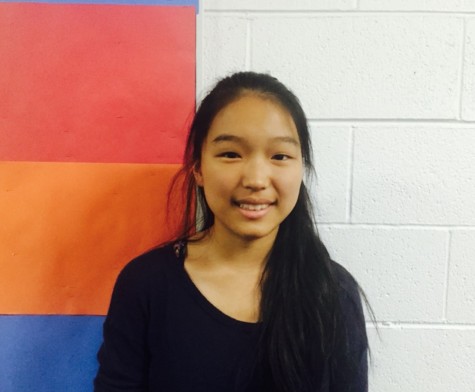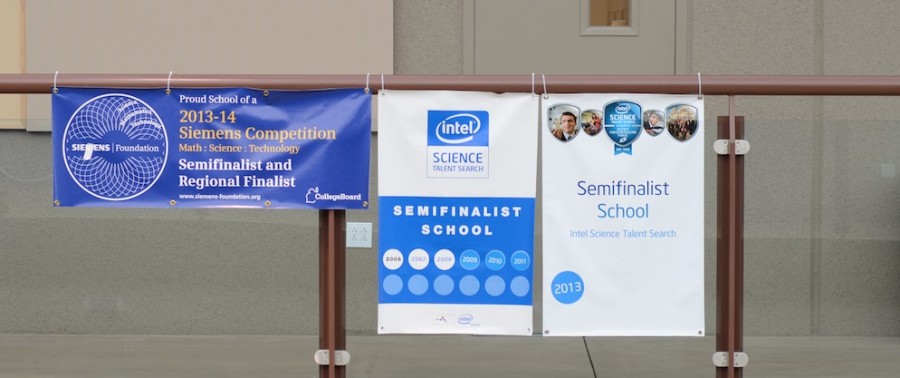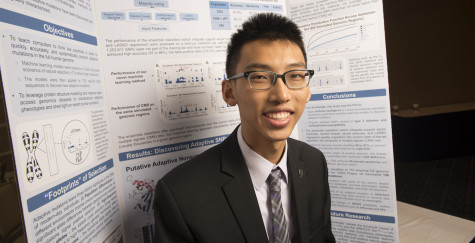Intel ends sponsorship of Science Talent Search
September 9, 2015
Silicon Valley computing company Intel Corporation will end its sponsorship of the prestigious high school Science Talent Search after the competition in 2017.
Although the Society for Science and the Public (SSP) will still run the competition after 2017, it will no longer be sponsored by Intel, which decided against renewing its 20-year contract.
Science Department Chair Anita Chetty believes that other companies will sponsor the competition in the future and that Intel’s previous work with the competition has largely aided efforts in promoting student research.
“I call it the ending of an era because no matter who takes it on, what Intel did for high school student research is unbelievable,” she said. “One can only speculate as to the number of discoveries out there that have happened simply because a high school student became interested. And so I think that is something that we ought to celebrate.”
Ever since its conception in 1942 as the Westinghouse Science Talent Search and the transfer to Intel’s sponsorship in 1998, the competition has aimed to empower young scientists and encourage pre-collegiate research.
Each year, the competition selects 300 semifinalists from across the nation, 40 of whom advance to the finalist round and are invited to Washington D.C. for judging and to meet with the President.
Last year, 1,800 contestants applied, out of which 15 semifinalists and three finalists were selected from Harker.
The competition began awarding prizes last year in the three categories of Basic Research, Global Good and Innovation. Chetty hopes that the competition will also consider focusing on other areas of concern with their awards.
“I’m really hoping that they will put an emphasis on global good, on sustainability, and really challenging students to address some of the current and future issues that we have with our own survival,” Chetty said.
Some students believe that Intel’s decision will reduce the motivation among student scientists to continue pursuing research.
“I feel like as if there will be less members participating in this event, just because Intel is such a big factor,” Alisa Su (10) said. “It definitely decrease the motivation for doing research for some students.”
Arun Shriram (12) believes that for the most part Intel’s decision won’t change the amount of student research.
“I don’t think that all the seniors will always take research classes just for the Intel competition, they might take it for other competitions, and they might take it for enrichment purposes. But, in any case, it will have an impact, but I don’t think it will be that big of an impact,” he said.
Although Intel is no longer sponsoring the Science Talent Search, it will continue supporting the Intel International Science and Engineering Fair (ISEF) for students in high school and Broadcom MASTERS for students in middle school.
Students earn awards in Intel STS
Since its first Intel Science Talent Search (Intel STS) entry in the 2005 to 2006 school year, the Upper School has produced 66 semifinalists and nine finalists across the competition’s twenty divisions.
In early January, Society for the Science and Public (SSP) announced that 15 Harker seniors had qualified as semifinalists, the most produced by any secondary school this year.
For Anokhi Saklecha (‘15), one of the semifinalists, Intel STS was an opportunity to further delve further into the subject matter explored in her science classes.
“I was always very intrigued by science and medicine in class, and I wanted to get a more hands-on experience with it,” Saklecha said. “As I entered high school, I started forming more and more questions on science-based topics, and research created a pathway for me to answer them.”
Of the fifteen semifinalists, SSP named three finalists in late January. SSP selected 40 finalists in total; with three, Harker had the most out of any school in the country.
The three seniors, Andrew Jin (‘15), Rohith Kuditipudi (‘15) and Steven Wang (‘15) traveled to Washington D.C. in March to present their research in the final phase of the competition.
Wang commented on the talent search. At the Upper School, he participated in other science research events, including the Siemens competition.
“The Intel fair glamorizes science in the way that it should,” Wang said.
In his research, Wang developed a computational model to identify the different causes of colorectal cancer from patient to patient; his project “Computer-Aided Genomic Characterization of Colorectal Cancer Driver Genes for Oncogenic Transformation of Primary Colon Organoids” synthesized bioinformatics and genomics.
Kuditipudi’s project “Bayesian Times Series Analysis of Liver Disease Progression” explored the underlying causes of liver disease’s advancement into more serious illnesses, such as liver cancer.
In his project, “A Machine Learning Framework to Identify Selected Variants in Regions of Recent Adaptation”, Jin developed an algorithm to recognize mutations in the human genome.
Jin placed first in the competition’s category of global good for his research on evolutionary genetics, winning a $150,000 prize.
Applications for Intel STS 2016 will be open till Nov. 11.
Students participate in national research competitions
Broadcom MASTERS
Broadcom MASTERS is as a national competition for middle school students who placed in the top 10 percent of their local SSP science fair earlier in the year.
In 2014, five students qualified as Broadcom semifinalists, and Rajiv Movva (10) placed first nationally in the Mathematics division. This year, freshmen Cameron Jones, Anjay Saklecha and Krish Kapadia were named semifinalists.

Krish Kapadia (9) participated in Synopsys and Broadcom Masters earlier this year with partner Anjay Saklecha (9).
Anjay and Krish’s project used saliva to test for dehydration.
“The research took a long time, longer than we expected,” he said. “There was a lot of rushing [because] we didn’t plan on it coming up that soon.”
Students submit applications online, and 300 are chosen as semifinalists. Thirty finalists from around the country then have the opportunity to travel to Washington D.C. to present their research, participate in team STEM activities, and meet the President.
Siemens Competition
The Siemens Competition serves as a platform for individual research projects of seniors or partner and group projects for other high school students.
Last year, 13 students qualified as Siemens semifinalists, and Jason Chu (‘15) and seniors Sadhika Malladi, Jonathan Ma and Vineet Kosaraju were named as regional finalists.
Sophomores Amy Jin and Jerry Chen conducted a research project to analyze genes related to obesity, and they will participate in this year’s Siemens Competition. Applications are due Sept. 22.

Amy Jin (10) and Jerry Chen (10) participated in Synopsys this year and are applying for Siemens.
“[Siemens] is kind of more formal in that you have to write a really long paper that’s 18 pages [maximum],” she said. “I think the technical paper writing process is something that you can learn a lot from.”
Amy does not believe that Intel’s ended sponsorship will significantly affect the Science Talent Search (STS) competition.
“STS is a very prestigious competition, and I think that a lot of people in the nation know how important it is in that it fosters high schools students in science,” she said. “So I think that corporations would be interested in sponsoring STS but that the competition won’t exactly change.”
Synopsys
The Synopsys Science & Technology Championship allows middle and high school participants to present their research to judges during its fair every March.
Krish, who participated in Synopsys last year, described his experience at the fair.
“Synopsys has a lot of face-to-face interaction, where you talk to talk to judges directly and you to have demonstrate what your project did,” he said. “The judges were kind of scary at first, but once you got used to it, it was fun.”
Amy has participated in Synopsys for two years.
“I think I learned a lot from presenting your project in a very clear way [so] specialists in your project’s field can understand what you did,” she said.
Last year, 27 students received awards from Synopsys, nine qualified for the California State Science Fair (CSSF) and three qualified for the Intel International Science and Engineering Fair (ISEF).




